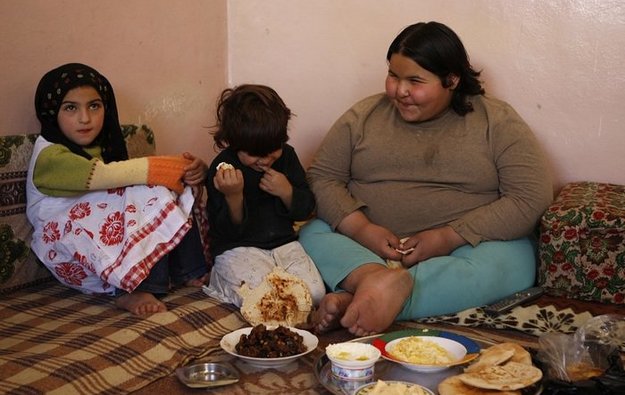Bahraini girls among the ‘heaviest in the world’
TDT | Manama
The Daily Tribune – www.newsofbahrain.com
Often known as the “Battle of the Bulge”, obesity has assumed epidemic proportions worldwide. The numbers are especially bad in GCC countries due to the rapid pace of social and economic changes over the last few decades. In the Middle East, in particular, obesity has become a major problem.
Studies by the World Health Organisation (WHO) show that over 50 percent of people in the Gulf are overweight and obese, caused by lack of exercise, sedentary lifestyles and poor eating habits.
High levels of obesity exist particularly among women, but often, men too, in many countries as diverse as Egypt, and Gulf states.
Obesity rates of 25-30 percent and even higher are typical in Bahrain, Kuwait, and the UAE. In fact, Bahraini girls are among the heaviest in the world. Only one in 10 Bahraini women have admitted to exercising regularly.
According to the Bahrain Centre for Studies and Research, the rapid rise in living standards is to blame. Before oil wealth, Gulf Arabs typically ate bread or rice with fish, vegetables and fruit — and rarely meat.
But consumption of sugar, fat and processed foods have shot up and intake of fresh fruit and vegetables has dropped. The study notes people in the UAE consume, on an average, 79 kg of meat a year, compared with only 13 kg in less wealthy and more traditional Yemen.
Almost 70 percent of Kuwaiti women suffer from obesity. Though more common in females, obesity also affects Kuwaiti men and causes several serious diseases such as heart attacks, high blood pressure, and disorders of hormones.
For men suffering from obesity, diabetes — an incurable condition in which the body cannot break down sugars in the blood — and hardening of the blood vessels are the most commonly linked diseases.
On the other hand, obese women suffer from chronic ailments such as vein hardening, high blood pressure and diabetes.
Indeed, it is the sedentary lifestyle, which is the primary indicator for the incidence of obesity.
In Iran, obesity rates vary from rural to urban populations rising to 30 percent among women in Tehran.
Interestingly, obesity has long been a major problem in Saudi Arabia among men and women.
Overweight women, overweight young women and grossly overweight young women are becoming very common sights on city streets, in cold stores and supermarkets.
The percentage of overweight and obesity increases with older age groups and this leads to more health problems. Studies on the prevalence of overweight and obesity among hypertensive and diabetic adult patients found that 46 percent of them were obese.
In the last three decades, obesity among adults, especially women, has increased and be- come a major health problem in Saudi Arabia.
A 1999 study by the WHO on obesity in Saudi Arabia among Saudis aged 14 and above, showed that 27.23 percent of males and 25.20 percent of females were overweight, with the prevalence of obesity being 13.05 percent among males and 20.26 percent among females.
For females, there were other contributing factors that cause obesity such as spending a great deal of time indoors, having little access to sports and other physical activities, socialising frequently where eating is the main activity, repeated pregnancy and employing maids to do housework.
WHO has announced that obesity is already a “world-wide epidemic.”
Practically speaking, no one is immune. We now know that obesity is a greater health problem today than drinking or smoking.
Related Posts



